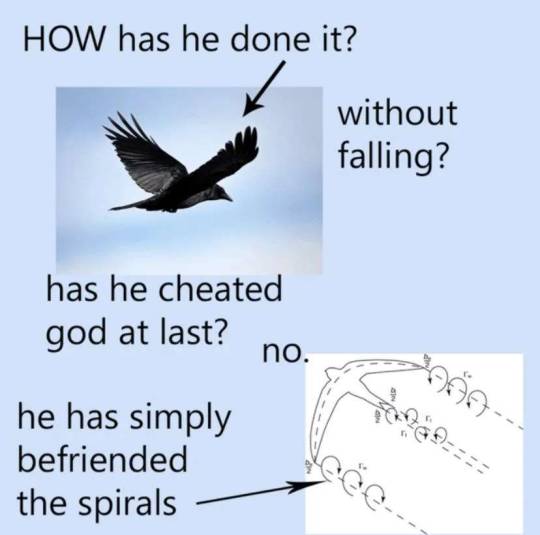Don't wanna be here? Send us removal request.
Text
Trachipterus sp.
Video is a powerful tool for studying the ocean. Cameras on MBARI’s advanced underwater robots help our scientists discover remarkable new species, describe communities, and assess ocean health. We’ve amassed a unique archive of deep-sea video that’s essential for research groups across MBARI and beyond. Our Video Lab Team combs through thousands of hours of footage to identify and label animals and objects we film.
These sightings are all of fish in the genus Trachipterus—members of the ribbonfish group, aptly named for their thin, ribbon-like bodies. As these fish mature, they change dramatically from dark red to shiny silver, and their frilled caudal and pelvic fins are greatly reduced. Because adult ribbonfishes spend most of their time in the ocean's dark depths—generally around 900 meters, or nearly 3,000 feet below the surface—sightings of this regal resident of the deep are uncommon.
From our first sighting of Trachipterus in 1991 to our most recent in 2021, these rare encounters highlight the value of long-term deep-sea exploration.
864 notes
·
View notes
Text
A team of paleontologists affiliated with several institutions in Argentina, working with a colleague from the U.K., has discovered evidence of scales from lepidopterans in dung samples recovered from a dig site in Talampaya National Park, Argentina. In their paper published in the Journal of South American Earth Sciences, the group describes how they found the scales in the dung samples and what the find means for scientists who study butterflies and moths.
Continue Reading.
979 notes
·
View notes
Text
Scientists have identified a novel rock type that has formed not over millions of years but within just 35. This unexpected lithification defies traditional rock-cycle models, which typically require thousands to millions of years.
502 notes
·
View notes
Text



Can You Imagine the Crab-Eating Frog?
The crab-eating frog (Fejervarya cancrivora) is a species of frog found throughout southeastern Asia, including Taiwan, southern China, the island of Sumatra, and the Philippines. They reside primarily in mangrove swamps, as well as tropical rainforests, estuaries, and near freshwater ponds and streams. They are particularly noted for their ability to tolerate high salinities, and they are the only known amphibian to make excursions into pure salt water.
The crab-eating frog is named for its usual diet which, around the mangrove, estuary, and coastal parts of its distributon, is composed mainly of crabs. This is supplemented with insects and smaller frogs, and near fresh water without crabs they make up the bulk of F. cancrivora's diet. Due to their small size, they have many predators, including birds, snakes, lizards, jungle cats, and larger fogs. Crab-eating frogs avoid being eaten by hiding in grass or under vegetation and leaf litter during the day; they are also more active at night.
Male and female crab-eating frogs are fairly similar in appearence. Both can be tan or brown, with dark mottling to resemble the muddy substrate in which they hunt, and a light underbelly. Females are slightly larger than males, reaching up to 10.7 cm (4.21 in) in length compared to only 8 cm (3.14 in). Males may also have dark throats, while females are bare.
Crab-eating frogs can breed year-round, but is particularly active during the wet season from June to October. Males will gather around bodies of water and call to attract females. Once a female has selected a mate, she will lay her eggs while he grasps her from above and fertilizes them. The eggs remain in the body of water in which they're laid without parental care. After hatching, the tadpoles take about three weeks to develop into adults.
Conservation status: F. cancrivora is considered Least Concern by the IUCN. They are harvested for food, but their primary threat comes from habitat destruction.
Photos
Nick Baker
Elijah Wostl
Benard Dupont
317 notes
·
View notes
Text
here is the albino earthworm I found today! it does not look like much at first glance, because there are many earthworms that are normally unpigmented and look much like this one.

but take a closer look at the head and you’ll see that the prostomium—the little lobe that comes off the first segment—is tanylobous, having creases until segment 2. that means it’s genus Lumbricus, which are all usually a dark reddish color!

here is the albino meeting another juvenile, a Lumbricus terrestris. I’m unsure if the albino is L. terrestris or rubellus, and will need to wait for it to grow up to be able to tell.

no matter what it is, it’s a privilege to see and raise this little oddity, I will keep you all updated on its progress!
3K notes
·
View notes
Text
Here’s a great demonstration of a bird’s version of panting- a behavior called “gular fluttering” that helps the bird to cool down on warm days. Demonstrated here by a toasty Anhinga.
2K notes
·
View notes
Text
Flamingos standing serenely in a shallow alkaline lake with heads submerged may seem to be placidly feeding, but there's a lot going on under the surface. Through studies of Chilean flamingos in the Nashville Zoo and analysis of 3D printed models of their feet and L-shaped bills, researchers have documented how the birds use their feet, heads and beaks to create a storm of swirling tornados, or vortices, in the water to efficiently concentrate and slurp up their prey.
Continue Reading.
527 notes
·
View notes
Text
Scientists have uncovered the genetic underpinnings of one of the ocean's most bizarre animals: a branching marine worm named Ramisyllis kingghidorahi that lives inside sea sponges and reproduces in a truly extraordinary way. Living hidden in tropical waters, this worm grows multiple body branches within a host sponge, each tail capable of producing separate living reproductive units called stolons. But how does a single animal coordinate sexual reproduction across so many branches? To find out, researchers led by the University of Göttingen analyzed gene expression across different body regions and between male, female and juvenile specimens. This provides the first complete "genetic activity map"—or transcriptome—of any branching worm, revealing how this creature manages to control reproduction across its branching body. The findings are published in BMC Genomics.
Continue Reading.
159 notes
·
View notes
Text

Some predatory mosquito larvae are capable of shooting out their gross little heads like harpoons to grab prey.
Article
5K notes
·
View notes
Text






CRAB CRAB CRAB
This was my first time working with leather because I got a burning desire for a bag shaped like a horseshoe crab. It has two zippered compartments, and an adjustable strap so it can be worn at my side as a cross-body bag or on my back more like a backpack.
47K notes
·
View notes
Text
"Do you ever dream of land?" The whale asks the tuna.
"No." Says the tuna, "Do you?"
"I have never seen it." Says the whale, "but deep in my body, I remember it."
"Why do you care," says the tuna, "if you will never see it."
"There are bones in my body built to walk through the forests and the mountains." Says the whale.
"They will disappear." Says the tuna, "one day, your body will forget the forests and the mountains."
"Maybe I don't want to forget," Says the whale, "The forests were once my home."
"I have seen the forests." Whispers the salmon, almost to itself.
"Tell me what you have seen," says the whale.
"The forests spawned me." Says the salmon. "They sent me to the ocean to grow. When I am fat with the bounty of the ocean, I will bring it home."
"Why would the forests seek the bounty of the oceans?" Asks the whale. "They have bounty of their own."
"You forget," says the salmon, "That the oceans were once their home."
160K notes
·
View notes
Text
"Why is it a problem if students use AI to get through college"
Because if you demonstrate to me that you're willing to set aside concern for truth, evidence, and verifying things with your own eyes whenever it happens to be inconvenient for you, I have a solemn responsibility to make sure you don't get into medical school.
66K notes
·
View notes
Text
Uncharismatic Fact of the Day
There are many species of lizard that live in burrows, but some are far fancier than others. The yellow-spotted monitor is known for its large, spiraling burrows; a single burrow can reach up to 3.6 m (11.8 ft) deep, making them the deepest of any known vertebrate!

(Image: A yellow-spotted monitor (Varanus panoptes) by Aaron Bean)
168 notes
·
View notes
Text
Our Japanese class found it funny that in common terminology "food" isn't very distinguished from specifically "rice" until it was pointed out to us that in English "meal" is "loose roughly ground grain"
205K notes
·
View notes
Text

Philippine Frogmouth (Batrachostomus septimus) parents with chick, family Podargidae, order Podargiformes, Sierra Madre, Rizal, Philippines
photograph by Mhark Gee
12K notes
·
View notes

